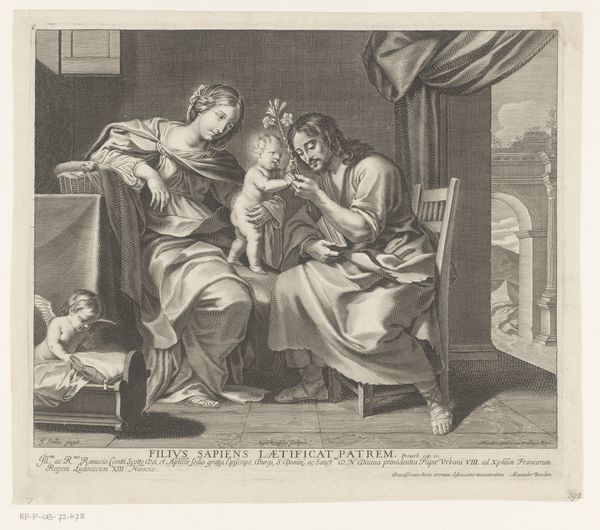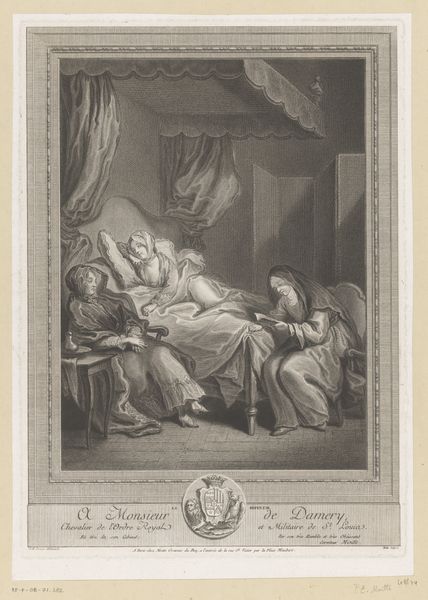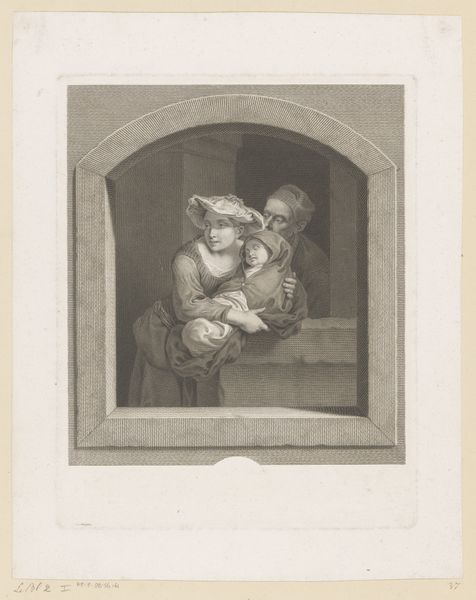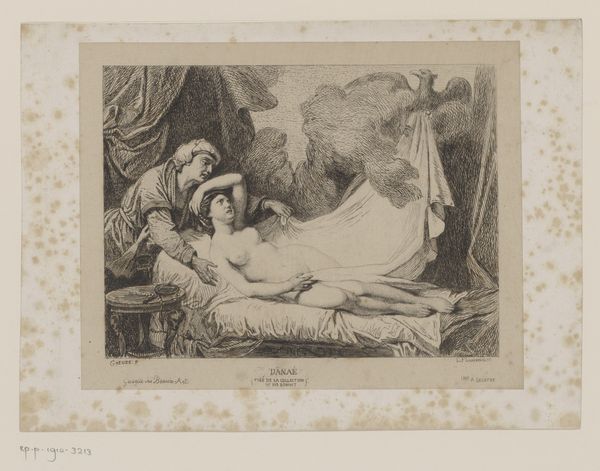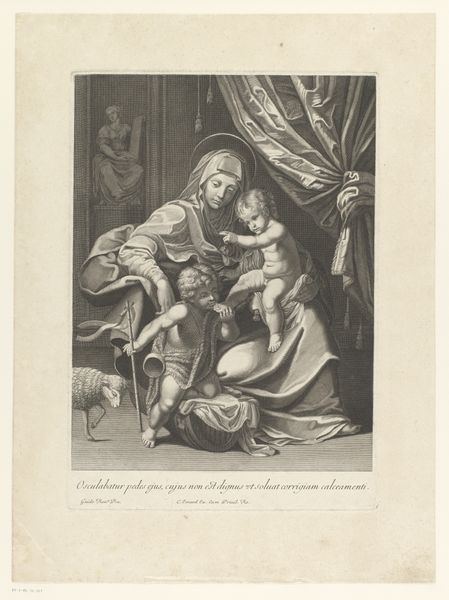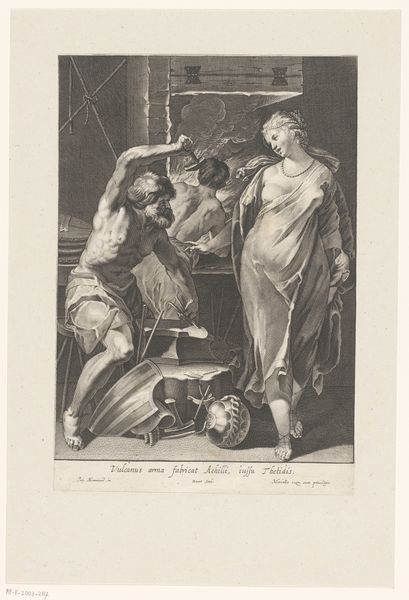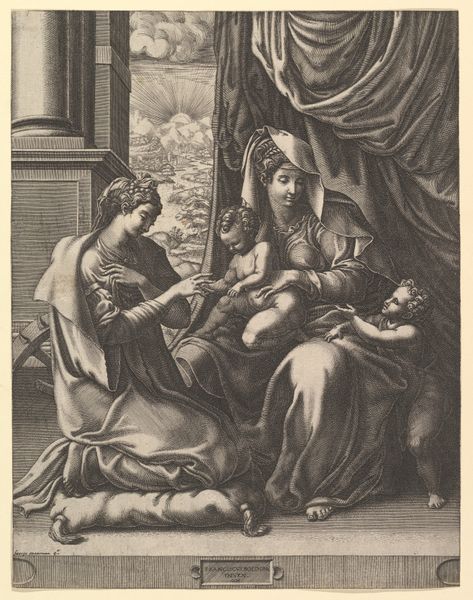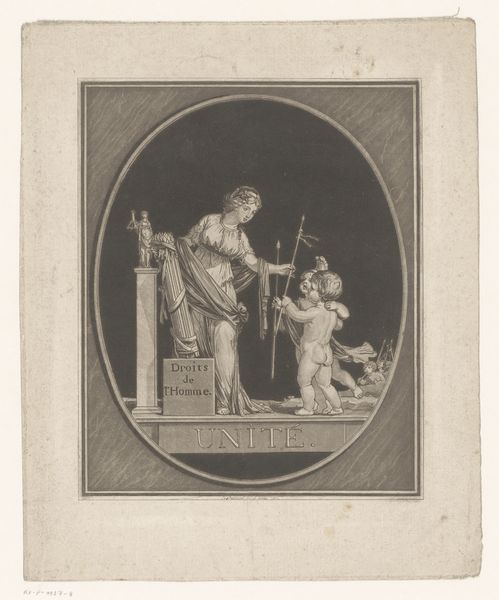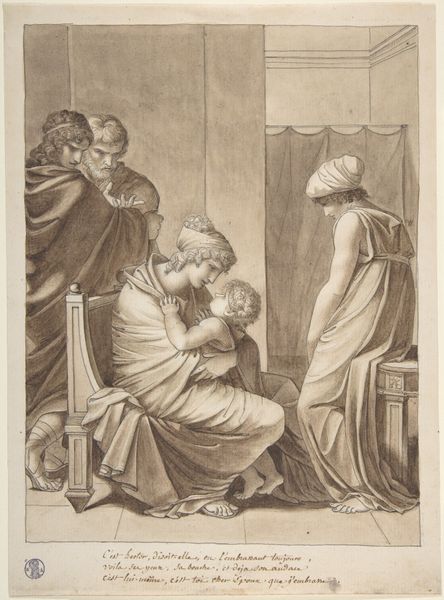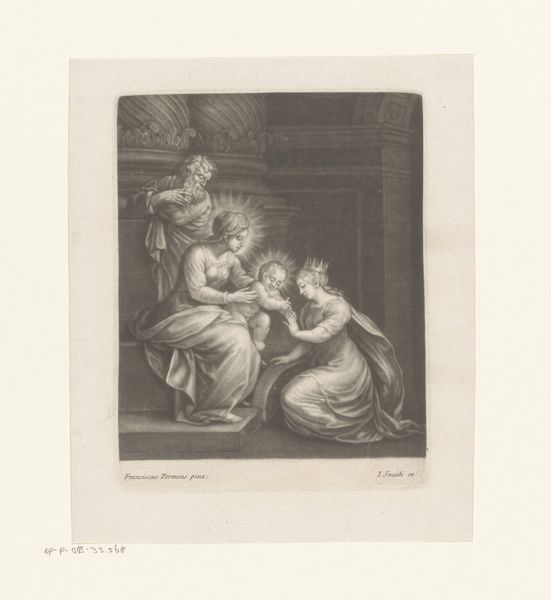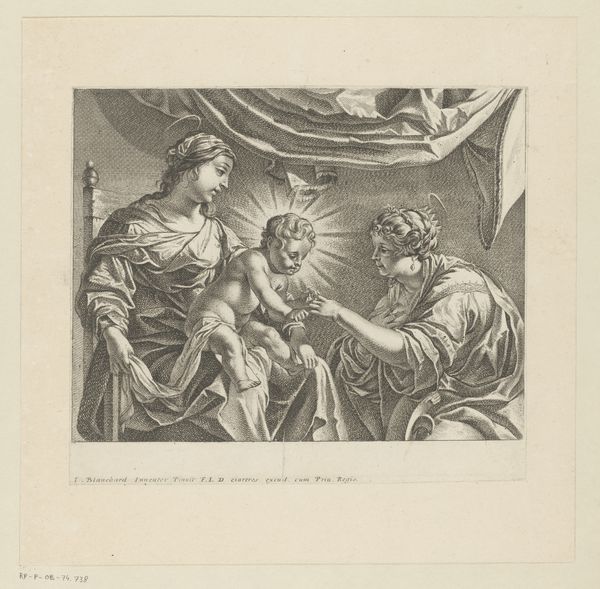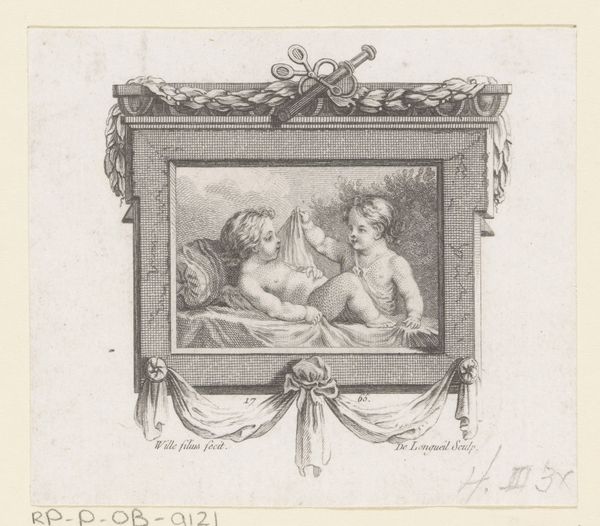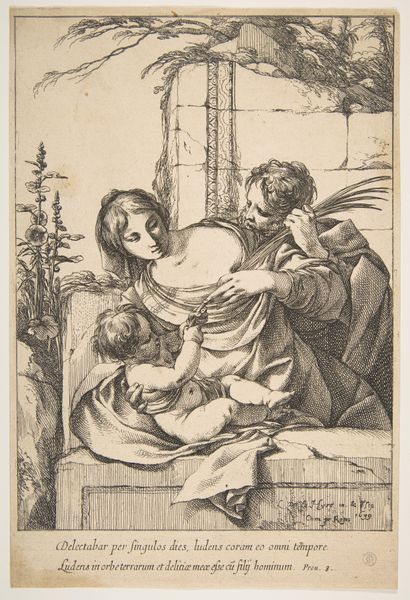
print, engraving
#
baroque
# print
#
old engraving style
#
figuration
#
pencil drawing
#
line
#
history-painting
#
engraving
Dimensions: height 296 mm, width 330 mm
Copyright: Rijks Museum: Open Domain
Curator: François Chauveau, a name resonant with Baroque printmaking, crafted "Maria met Kind en Johannes de Doper" in 1671. It resides here at the Rijksmuseum, etched in detailed engraving. Editor: My first impression? A domestic tableau, yet imbued with an almost unsettling serenity given the figures. There's a stillness about it, despite the children's interaction with Mary. Curator: The serene quality may stem from the carefully constructed symbolism. Notice how the children reach toward each other across Mary's lap, almost as if bridging two different destinies with her maternal figure at the center. The cross peeking out of the background curtains serves to underline that destiny of one. Editor: The composition itself is intriguing. It's all line, isn't it? Everything carefully delineated, creating a tactile surface. But the real work, for me, seems to have been put in the very elaborate frame which is an essential part of the image. Do we know anything about the socio-economic conditions that drove such a clear emphasis on such ornamentation here? Curator: One can infer meaning in such presentation - even just by contemplating the presence of the basket of fruit. Some would associate that very clearly with original sin, a constant burden, and yet an offering. In religious images, particularly within the Baroque style, every element functions as a symbol for both instruction and recollection. Editor: So much production went into creating even prints at this time. Consider the labor invested in just producing one plate. What this communicates, I suspect, is that there was an availability of production that signaled an economic power accessible at least for certain sectors of the community commissioning this art. Curator: Yes, even the dissemination of images like these played a role. It was a constant reiteration, a visual form of catechism available in more prosperous homes. Editor: Knowing something of the work that underpinned even just a single sheet really causes me to regard this art form from an altogether different viewpoint. Curator: Absolutely. Now that our eyes are tuned to its symbolic depth, the narrative of fate and faith speaks loudly in our contemporary consciousness. Editor: Indeed. I'll leave here contemplating that potent mixture of economic display and devotion so brilliantly presented in "Maria met Kind en Johannes de Doper".
Comments
No comments
Be the first to comment and join the conversation on the ultimate creative platform.
